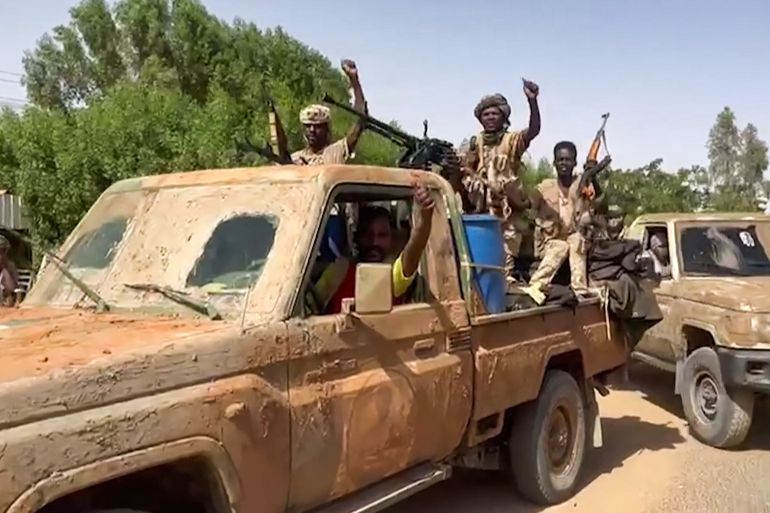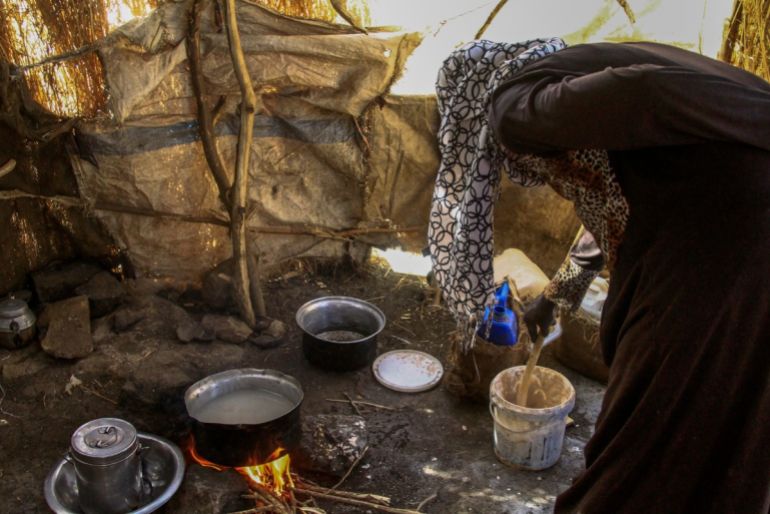Source; Ajazera,
After a year of war in Sudan, what is the situation now?
Peacemaking efforts and attempts at ceasefire have all collapsed since fighting broke out in Khartoum last year.

Published On 11 Apr 202411 Apr 2024
It has been nearly one year since war broke out in Sudan, causing a devastating humanitarian crisis and bringing long-existing political and ethnic tensions into sharp focus.
The two warring parties, the Sudanese Armed Forces (SAF) and paramilitary Rapid Support Forces (RSF), have continued a longstanding struggle for power. Over the past year, violent clashes have killed nearly 16,000 people and displaced millions.
KEEP READING
list of 3 itemslist 1 of 3
Sudan crisis one of the ‘worst humanitarian disasters in recent memory’: UN
list 2 of 3
Are Sudan’s civil society activists being targeted by both warring sides?
list 3 of 3
First UN food aid in months arrives in Sudan’s Darfur as famine looms
end of list
Thousands of desperate people are still fleeing the country daily “as if the emergency had started yesterday”, the United Nations reported on Tuesday this week.
Diplomatic efforts have failed to put an end to the crisis, which experts have said was partially triggered by an internationally backed plan to merge the RSF into the army.
Here’s what you need to know about Sudan’s war, the peacemaking efforts which have been undertaken since it broke out and what the humanitarian situation is now.
https://imasdk.googleapis.com/js/core/bridge3.633.0_en.html#goog_460039255Play Video
Video Duration 02 minutes 02 seconds02:02
Why is there a war in Sudan?
The war in Sudan broke out on April 15, 2023, when a power struggle between the army chief, Abdel Fattah al-Burhan, and RSF commander Mohamed Hamdan “Hemedti” Dagalo reached a tipping point.
After Sudan’s ruler for nearly 30 years, President Omar al-Bashir, was toppled by a popular uprising in 2019, a fragile transition to civilian-led democracy was blown apart when al-Burhan and Hemedti staged a coup in 2021.
Sign up for Al Jazeera
Weekly Newsletter
The latest news from around the world. Timely. Accurate. Fair.Subscribe

By signing up, you agree to our Privacy Policy
protected by reCAPTCHA
The army and the RSF initially shared power but an ensuing power struggle between the two was exacerbated by an internationally backed Framework Agreement in December 2022. This attempted to integrate the RSF into the army as part of a wider reform of the security sector and the transition to democracy.
While Western countries pressured the two sides to reach a deal quickly, promising aid and debt relief as incentives, each side feared ceding too much control to the other in a new political order.
“The Framework Agreement … brought to the fore key existential issues for both forces and their leaderships, such as [RSF] integration into a single army, military divestment from lucrative sectors of the economy and the prospect of [soldiers] facing justice for past abuses,” Jonas Horner, an independent researcher on Sudan, told Al Jazeera.
“Most of all … the two forces feared being left weaker than the other.”
Tensions between the two military forces reached boiling point in Khartoum on April 15 last year, when both forces sent armoured vehicles into the streets and they opened fire on each other.

